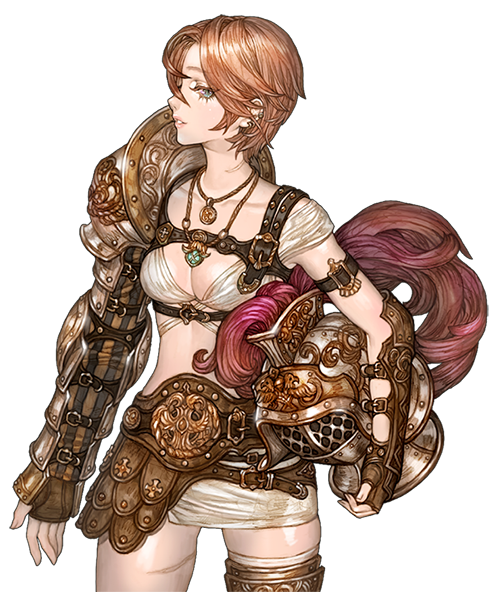The Lore You Know – Murmillo
By STAFF_Letitia
Apr 13th, 2018

As the new class, Retiarius, makes its way into the TOS battle scene, let’s take a look at one of their fierce opponents in the arena, the Murmillo – the “fish-fighter.”
In ancient Rome, watching gladiators fight in the amphitheatres was a common pastime. What may seem cruel to us now was simply a way for the Romans to celebrate their successes and relive their victories as they enjoyed watching the combat styles of their defeated enemies. Gladiators were organized into different classes according to their weapons and fighting styles and were usually matched against gladiators with contrasting advantages and disadvantages. For example, if a gladiator was heavily equipped but slow, they may face off against a swifter gladiator with less armor. In the case of the Murmillo, their opponent in the ring was the Thraex, the Hoplomachus, or the Retiarius.

The Murmillo was one of the most heavily armed gladiators at the time and was created to replace the Gaul gladiator class. Although, not much is known about these earlier Gaul gladiators, their replacement by the Murmillo reflects the development of a fruitful relationship between the region of Gaul and Rome as they no longer want to portray the Gauls as enemies.
Historians suggest that the word murmillo is derived from the Greek word for fish, mormulos, with further evidence seen in the fact that their helmets would sometimes be decorated with an image of a fish. The helmet of the Murmillo, Cassis Crista, was large with an angular chest decorated with horsehair that had a visor that protected the wearer’s face. Some believe that the small eye-holes in the helmets were there to protect the wearer’s eyes from the narrow prongs of the retiarius trident.

The Murmillo were also equipped with: a gladius, a roman sword with a handle made of bone; an orcea, which was a metal greave worn on the lower left leg; and a manica, which was an arm guard made of cloth or leather wore on their right arm. The Murmillo also carried a heavy shield, the scutum, that was oblong and semi-cylindrical and could not only deflect blows with ease but could also provide protective covering from shoulder to calf.

The heaviness of the shield forced the Murmillo to develop different fighting techniques and to build up a hearty level of endurance as the key to their victories usually involved a great deal of patience. They fought in the defensive, using their shield to protect against overzealous attacks and waited until the opponent was open or showed signs of fatigue to make their move. Which makes me wonder if our Murmillos in game are just as patient in the heat of battle.
References
Alchin, Linda. 2017. Tribunes and Triumphs. Murmillones. [Online].
Coleman, Kathleen. 2011. BBC History. Gladiators: Heroes of the Roman Amphitheatre. [Online].
Dunkle, Roger. 2013. Gladiators: Violence and Spectacle in Ancient Rome. Murmillo. [Text].
Remembering the Gods. 2016. Recognising Gladiators: IV the Murmillo. [Online].
Warriors and Legends. 2018. Murmillo Gladiator. [Online].
Wikipedia, 2018. Murmillo. [Online].
